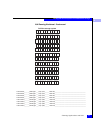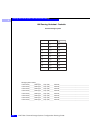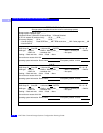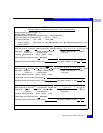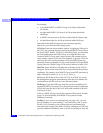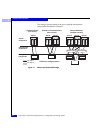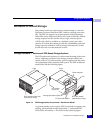
4
4-12
EMC Fibre Channel Storage Systems Configuration Planning Guide
Planning LUNs and File Systems with Unshared Direct Storage
Completing the LUN Details Worksheet
Complete the header portion of the worksheet for each storage
system as described below. Copy the blank worksheet as needed.
Sample completed LUN worksheets appear later.
Storage-System Entries
Storage-system configuration. Specify Unshared Direct (one server)
or Shared-or-Clustered Direct (two servers).
For any multiple-server configuration, each server will need cluster
software.
SP FC-AL address ID. For unshared storage, which uses FC-AL
addressing, each SP (and each other node) on a Fibre Channel loop
must have a unique FC-AL address ID. You set the SP FC-AL address
ID using switches on the back panel of the SP. The valid FC-AL
address ID range is a number 0 through 125 decimal, which is 0
through 7D hexadecimal. For any number above 9, we suggest
hexadecimal, since the switches are marked in hexadecimal.
If you have two FC-AL loops, we suggest a unique FC-AL address ID
for each SP on both loops.
SP memory. Enter the amount of memory each SP has. If a storage
system has two SPs, they will generally have the same amount of
memory. You can allocate this memory to storage-system caching or
RAID 3 use.
Use memory for caching. You can use SP memory for read/write
caching or RAID 3. (Using both caching and RAID 3 in the same
storage system not recommended.) You can use different cache
settings for different times of day (for example, for user I/O during
the day, use more write cache; for sequential batch jobs at night, use
more read cache. You enable caching for specific LUNs — allowing
you to tailor your cache resources according to priority. If you choose
caching, check the box and continue to the next step; for RAID 3, skip
to the RAID Group ID entry.
Read cache size. If you want a read cache, it should generally be
about one third of the total available cache memory.
Write cache size. The write cache should be two thirds of the total
available. Some memory is required for system overhead, so you
cannot determine a precise figure at this time. For example, for 256
Mbytes of total memory, you might have 240 Mbytes available, and






